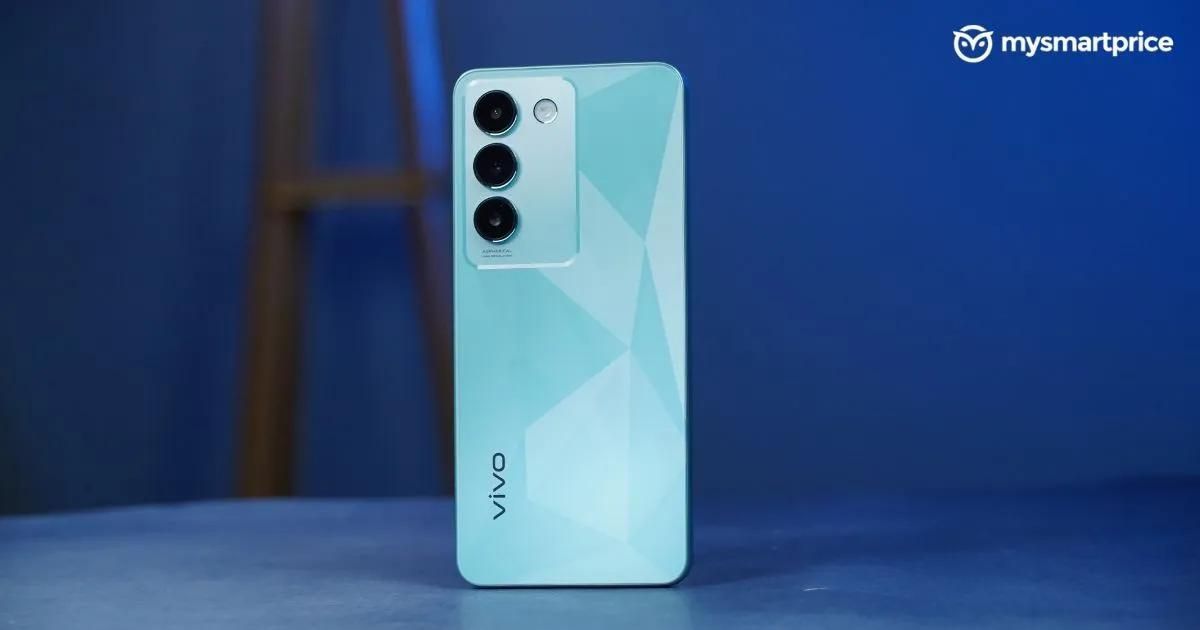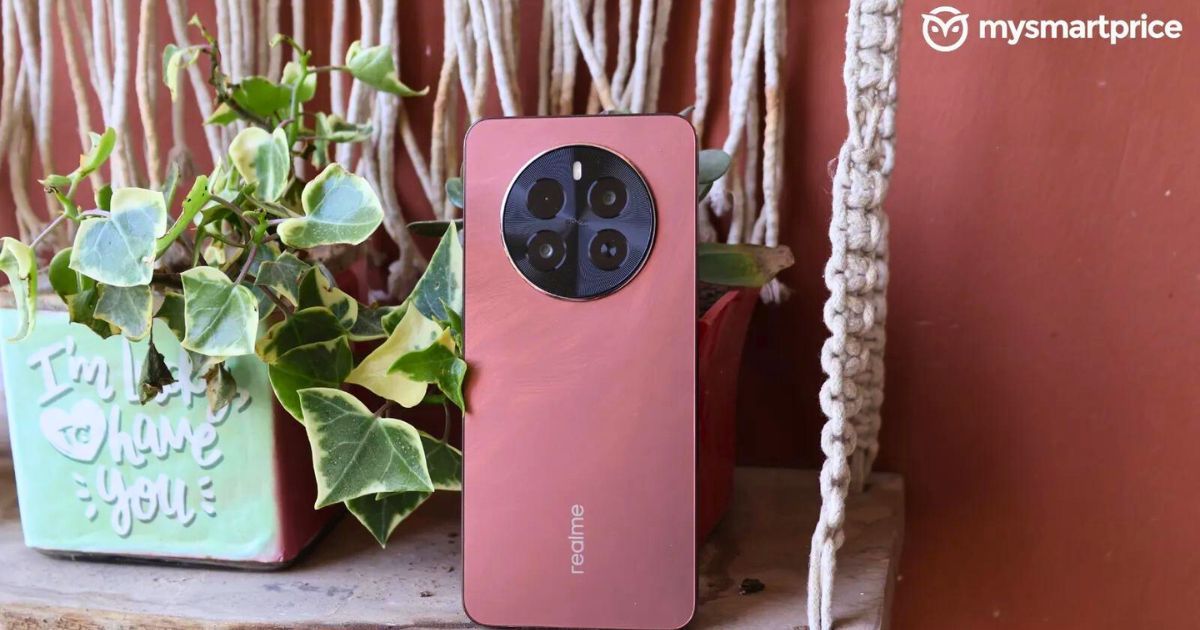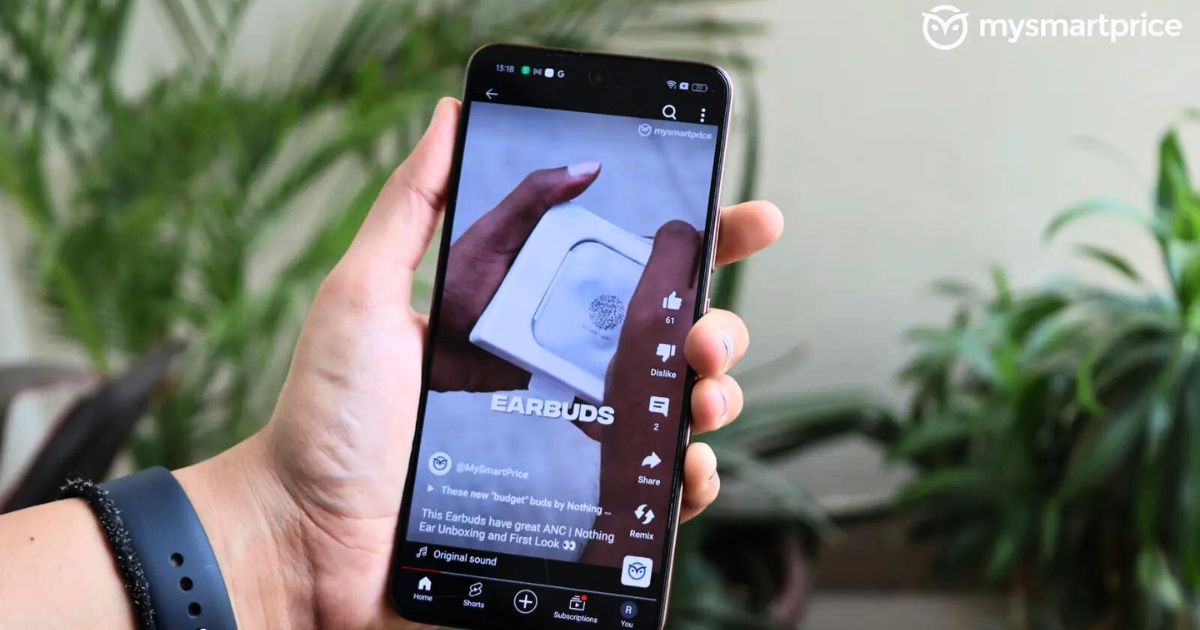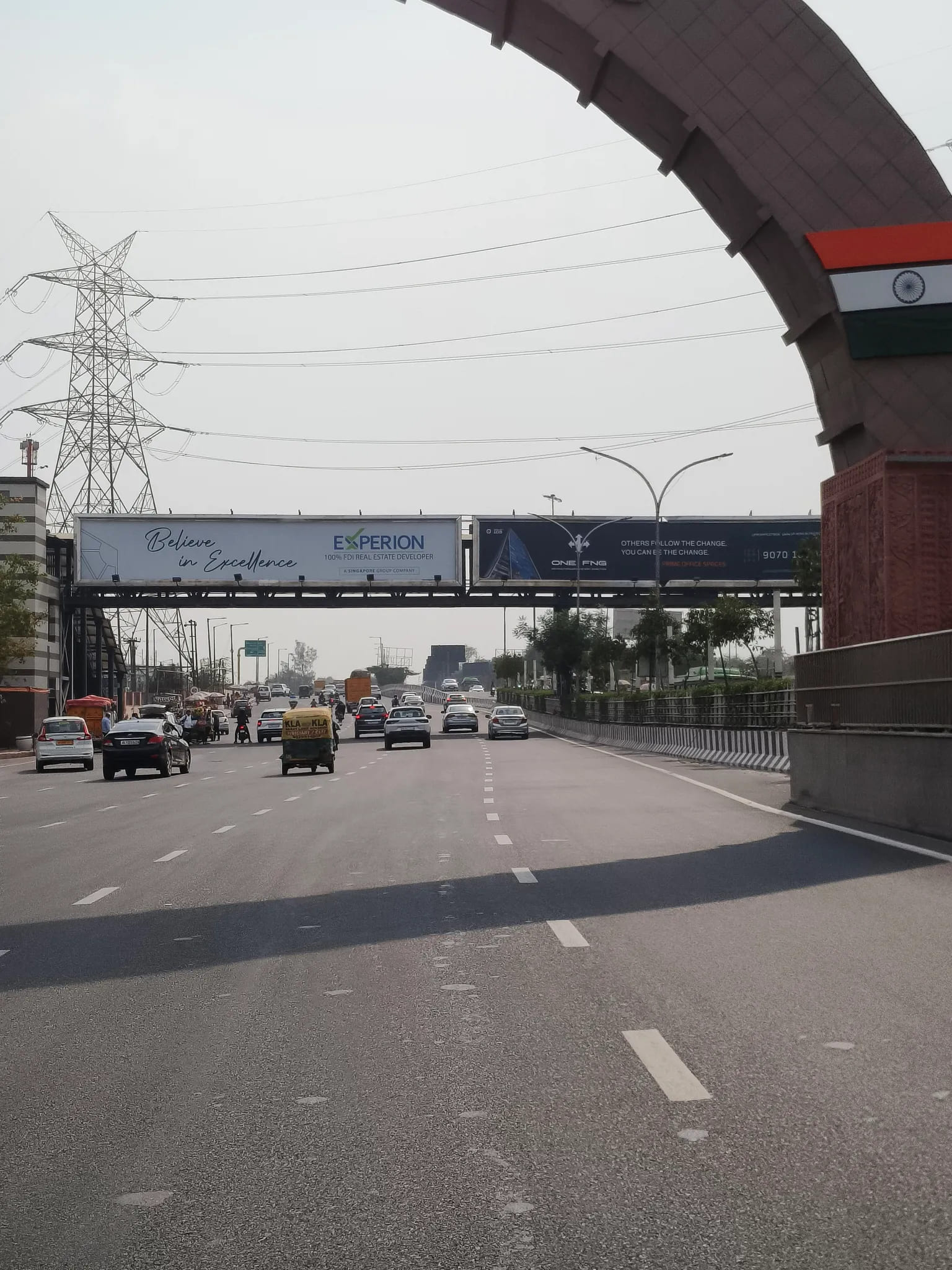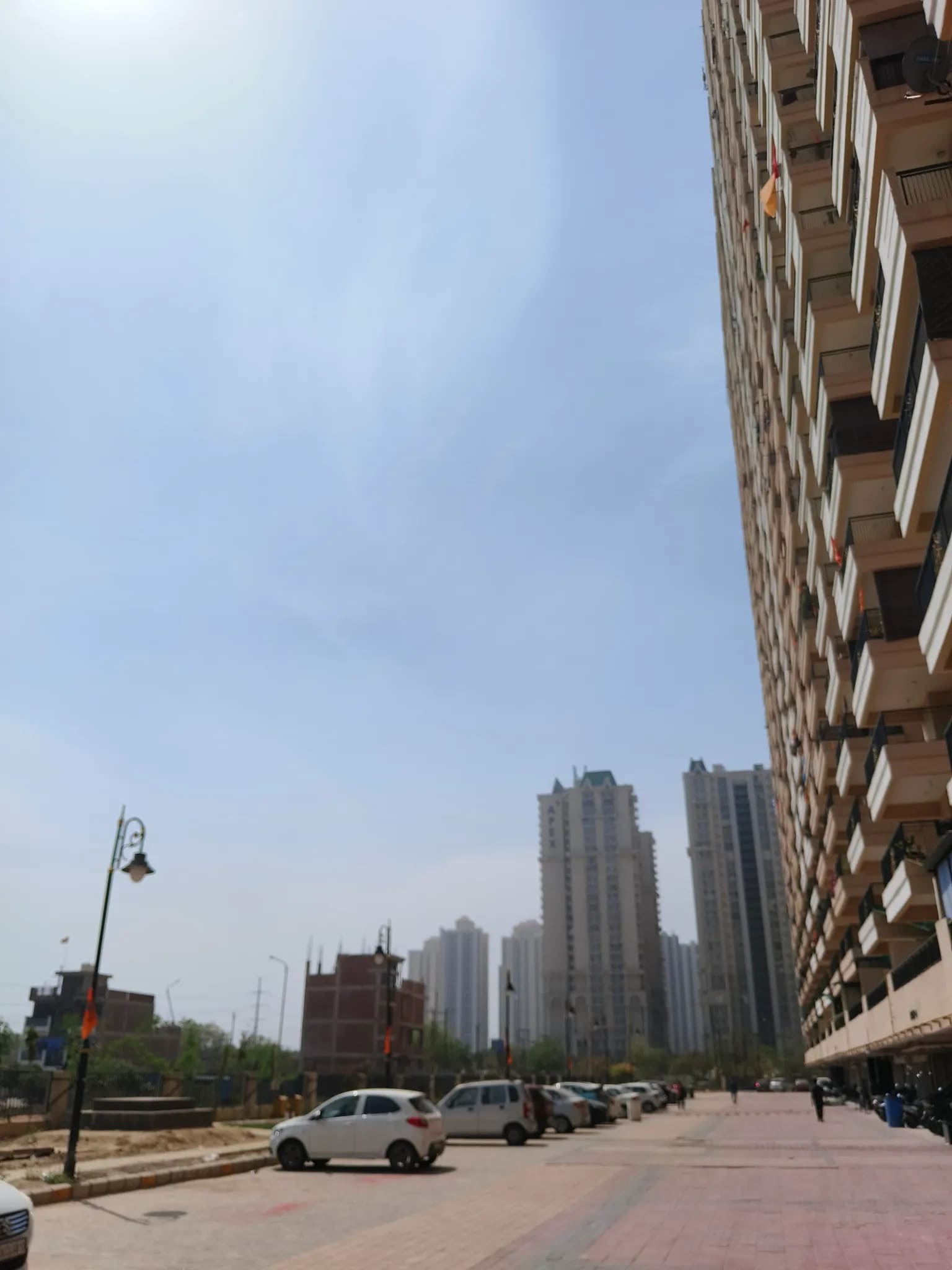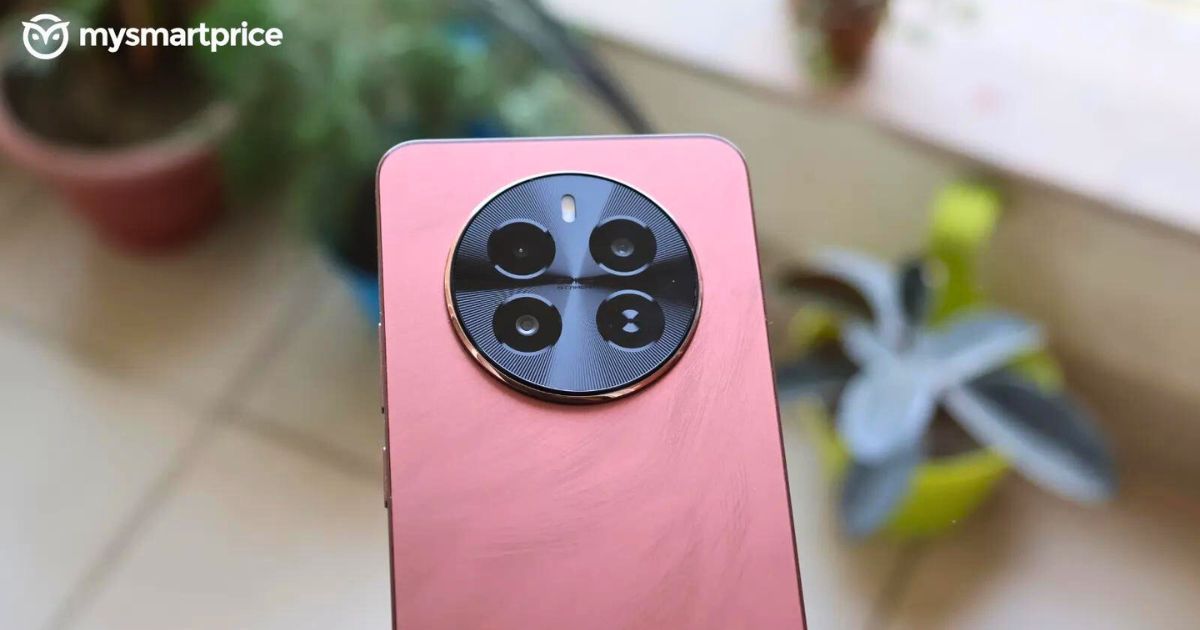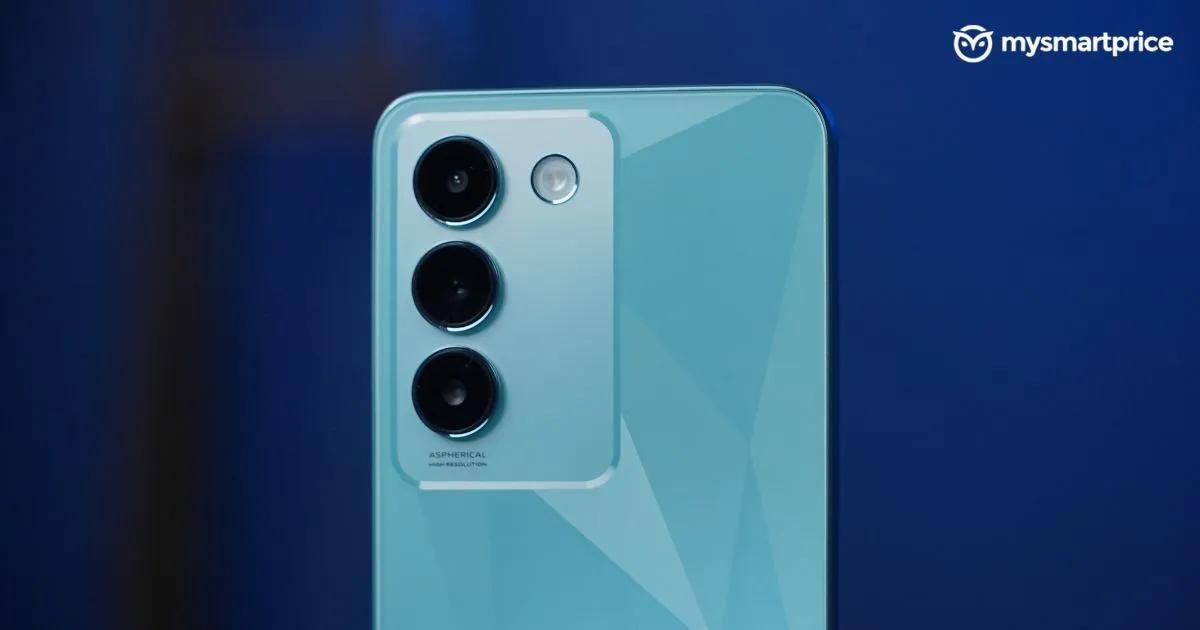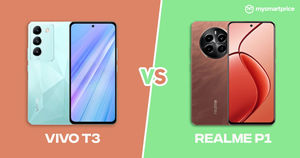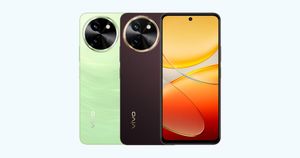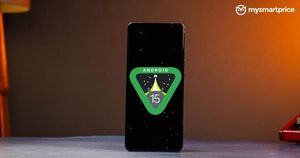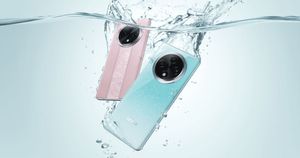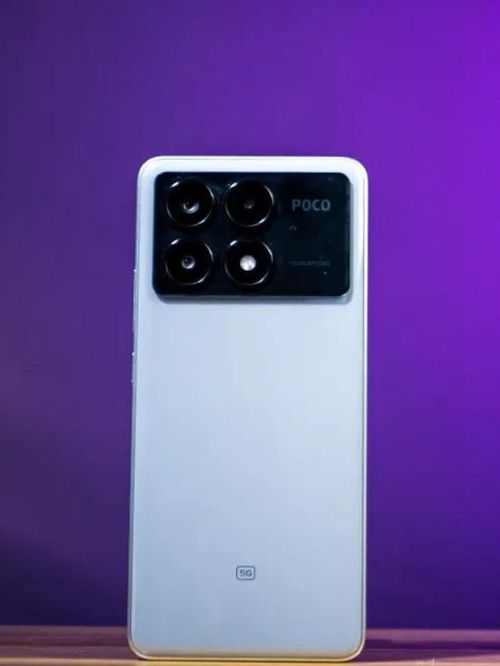
The competition in the budget segment is heating up! Realme recently launched the P1, boasting impressive features like the Dimensity 7050 SoC, a large 6.67-inch AMOLED display, and more. All for just Rs 15,999. But is it the only option? Not at all, Vivo’s T3 is another strong contender in the segment. So, if you are in the market looking for a new budget device and are confused between the Vivo T3 and the Realme P1, you have landed at the right place. We’ve been testing both devices, and this guide will help you choose the perfect one for your needs!
Vivo T3 vs Realme P1 Price in India
| Smartphone | Configuration | Price |
|
Vivo T3
|
8GB+128GB | Rs 19,999 |
| 8GB+256GB | Rs 21,999 | |
|
Realme P1
|
6GB + 128GB | Rs 15,999 |
| 8GB + 256GB | Rs 18,999 |
Vivo T3 vs Realme P1: Design
| Vivo T3 | Realme P3 | |
| Dimensions | 163.2 x 75.8 x 7.8 mm |
163 x 75.5 x 8 mm
|
| Weight | 185.5 g | 188 g |
The T3 has a flat-frame design style, which has been the trend in almost all smartphones lately. It has a plastic build, but don’t let it fool you. The T3 feels surprisingly sturdy and exudes a premium look that punches above its budget price tag. Apart from that, the shimmering rear panel with geometric textures looks cool and adds a touch of visual appeal.
On the other hand, the P1 seems to be taking notes from its distant sibling, the Realme 12, at least, in terms of design. It comes in Phoenix Red and Peacock Green colourways, the former of which is a head-turner. Apart from the colour, Realme has also given enough emphasis on minute details like the brushstroke pattern surrounding the camera module. However, the P1’s true beauty shines in direct sunlight.
While we know design is subjective, we are leaning more towards the Realme P1. The colour is refreshing, something we have not seen in the smartphone arena for a long time. Besides, it looks unique and premium; the feather-like brush strokes look beautiful. However, don’t get us wrong—the T3 has a nice design and doesn’t look cheap.
Vivo T3 vs Realme P1: Display
| Vivo T3 | Realme P3 | |
| Type | AMOLED, 120Hz, 1800 nits (peak) |
AMOLED, 120Hz, 2000 nits (peak)
|
| Size | 6.67 inches | 6.67 inches |
| Resolution | 1080 x 2400 pixels, 20:9 ratio (~395 ppi density) |
1080 x 2400 pixels, 20:9 ratio (~395 ppi density)
|
Vivo has made several improvements to the T3’s display compared to its predecessor. Firstly, it’s a larger 6.67-inch panel compared to the T2’s 6.38-inch. Secondly, the refresh rate jumps to 120Hz (up from 90Hz). And finally, the peak brightness of 1800 nits (up from 1300 nits) and HDR10+ certification offer rich colour reproduction. We binge-watched Peaky Blinders on the T3; the colours were sharp and vivid. While the brightness feels underwhelming when using the device in direct sunlight, the overall display on the T3 is quite impressive.
When it comes to the P1, it also offers a great visual experience with its 6.67-inch AMOLED panel. The colours are punchy, the details are sharp, and the blacks are deep, making it a perfect companion for watching videos or playing games. Realme claims to have a 2000 nits peak brightness on the P1, but during our testing, it only reached 1621 nits, which is not bad either. Even under direct sunlight, the display remains bright and legible. However, the device’s thick chin might bother someone using the P1 in light mode.
It’s hard to decide on a clear winner here. Both smartphones flaunt beautiful AMOLED displays with a 120Hz refresh rate. However, if extra brightness matters, you should opt for the Realme P1. Apart from that, both devices will deliver almost the same display experience.
Vivo T3 vs Realme P1: Performance and UI
| Vivo T3 | Realme P3 | |
| OS | Android 14, Funtouch 14 |
Android 14, Realme UI 5.0
|
| Chipset | Mediatek Dimensity 7200 |
Mediatek Dimensity 7050
|
| CPU | Octa-core (2×2.8 GHz Cortex-A715 & 6x 2.0 Cortex-A510) |
Octa-core (2×2.6 GHz Cortex-A78 & 6×2.0 GHz Cortex-A55)
|
| GPU | Mali-G610 MC4 |
Mali-G68 MC4
|
The T3 offers solid performance, thanks to its Dimensity 7200 chipset paired with a Mali G610 GPU. When performing daily tasks like scrolling through social media, sending emails, or chatting through WhatsApp, the phone performed quite well without any lag or heating issues. We also played Call of Duty: Mobile and it ran smoothly without any stutter.
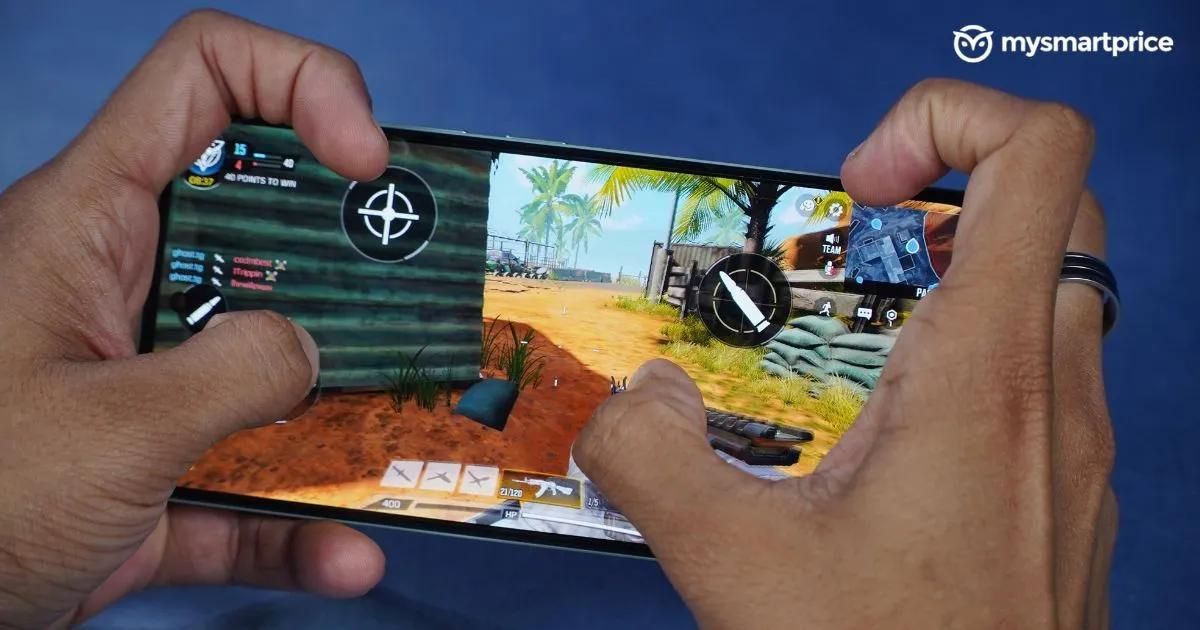
The P1, on the flip side, packs a Dimensity 7050 chipset paired with Mali G68 GPU. The phone performed well during casual usage, including calling, using social media, and playing casual games like subway surfers. We even tried playing BGMI in Smooth graphics and Extreme framerate settings, and there were no noticeable lags or stutters during gameplay. However, there was a slight delay of a second or two when using the gun. This happened once or twice, so there’s nothing to complain about. However, it’s important to note that the phone did warm up slightly after 35-40 minutes of gameplay, but it didn’t cause any major issues.
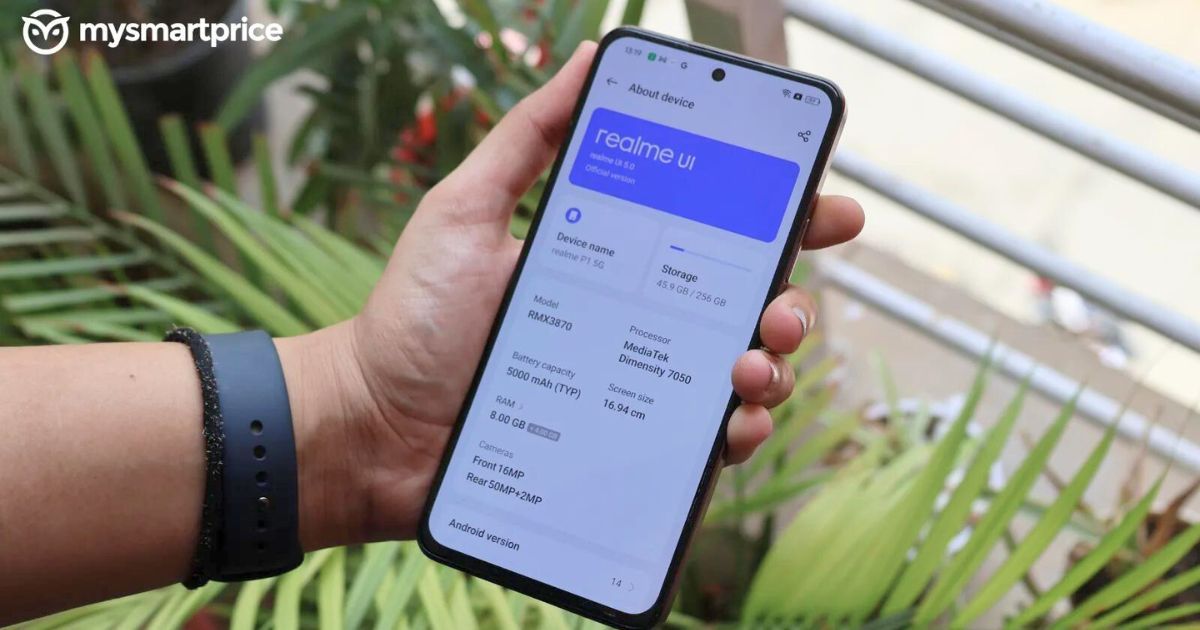
Both smartphones run Android 14-based UI and offer two years of software and three years of security updates. The smartphones come with some pre-installed apps on the device. These can be disabled or uninstalled, though.
Vivo T3 vs Realme P1: Cameras
| Vivo T3 | Realme P3 | |
| Rear Cameras | 50-megapixel, PDAF, OIS 2-megapixel |
50-megapixel, PDAF
2-megapixel |
| Features | LED flash, panorama, HDR |
LED flash, HDR, panorama
|
| Video | 4K@30fps, 1080p@30fps, OIS |
1080p@30/60/120/480fps, 720p@960fps, gyro-EIS
|
| Front Camera | 16-megapixel | 16-megapixel |
Vivo is known for its camera-centric smartphones and the T3 is no exception. The 50-megapixel Sony IMX882 sensor on the T3 steals the spotlight, helping you capture dependable shots in the daytime with good details and colour accuracy. Interestingly, there’s also a dedicated Supermoon mode, a feature we’ve only seen on higher-end Vivo devices.
The P1 also boasts a 50-megapixel primary sensor, which captures some good images in daylight with pleasing colours. It lacks detail when zoomed in using the 2x mode, and the resulting images may appear slightly hazy. But that is acceptable at this price point. Overall, the optics on the P1 are capable of delivering some decent results in good lighting conditions.
Both smartphones struggle a bit when it comes to low-light situations. But considering their price point, we don’t have anything to complain about. The devices can deliver social media-ready pictures, which is sufficient for most of us.
Vivo T3 vs Realme P1: Battery Life and Charging
Both smartphones pack a 5,000mAh battery with support for a 44W charger (for the T3) and a 45W charger (for the P1). These phones will last you the entire day without issues and give you 6 to 7 hours of screen time with moderate usage. Thanks to almost similar fast charging support, both devices will go from 0 to 100% in about 1 hour and 10 minutes.
Verdict
While the Vivo T3 and the Realme P1 offer similar experiences in the display, battery life/charging, and camera departments, their key difference lies in performance. The T3 delivers more robust performance, but that extra power comes at a premium. Don’t misunderstand—the P1 is good too; It’s a dependable performer, just not as powerful as the T3. That said, the P1 steals the show with its eye-catching design.
Gamers, power users, and those prioritising raw performance will find the Vivo T3 more attractive, especially if a few extra thousand isn’t a dealbreaker.
However, if you value aesthetics and staying within budget, the Realme P1 is the clear winner.
